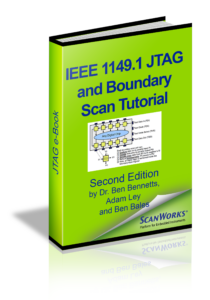IEEE 1149.1 JTAG and Boundary Scan Tutorial | Second Edition
Home / eResources / IEEE 1149.1 JTAG and Boundary Scan Tutorial | Second Edition
JTAG was originally developed to solve board interconnect test problems and has evolved into a widespread and generic soft access test mechanism for chips, boards and systems. Examples include reading internal registers and chip ID-codes, program flash memories, run BIST and embedded instruments thru IJTAG.
Download this e-book and learn all there is to know of about the boundary scan JTAG (TAP) architecture and the problems it solves to create high test coverage. Written by Dr. Ben Bennetts, a leading Design For Testability (DFT) expert who has worked for GenRad, Synopsys and LogicVision. Additional content has been added to this e-book by ASSET’s own Chief Technology Officer Adam Ley and Application Engineer Ben Bales.
This e-book will tell you about the standard and how it can be put to work in the design, verification and manufacturing process. It also provides information of JTAG’s relationship with other test techniques such as In-Circuit Testing (ICT), functional test, CPU emulation and others.
Learn about …
- JTAG, IEEE standards 1149.1, 1149.6 1532
- JTAG, IEEE standards 1149.1-2013 and 1687 (IJTAG)
- DFT Guidelines for chips and boards
- The TAP interface: what to test for…and what not!
- Boundary Scan Description Language, BSDL
- Raising fault coverage: digital and analog


